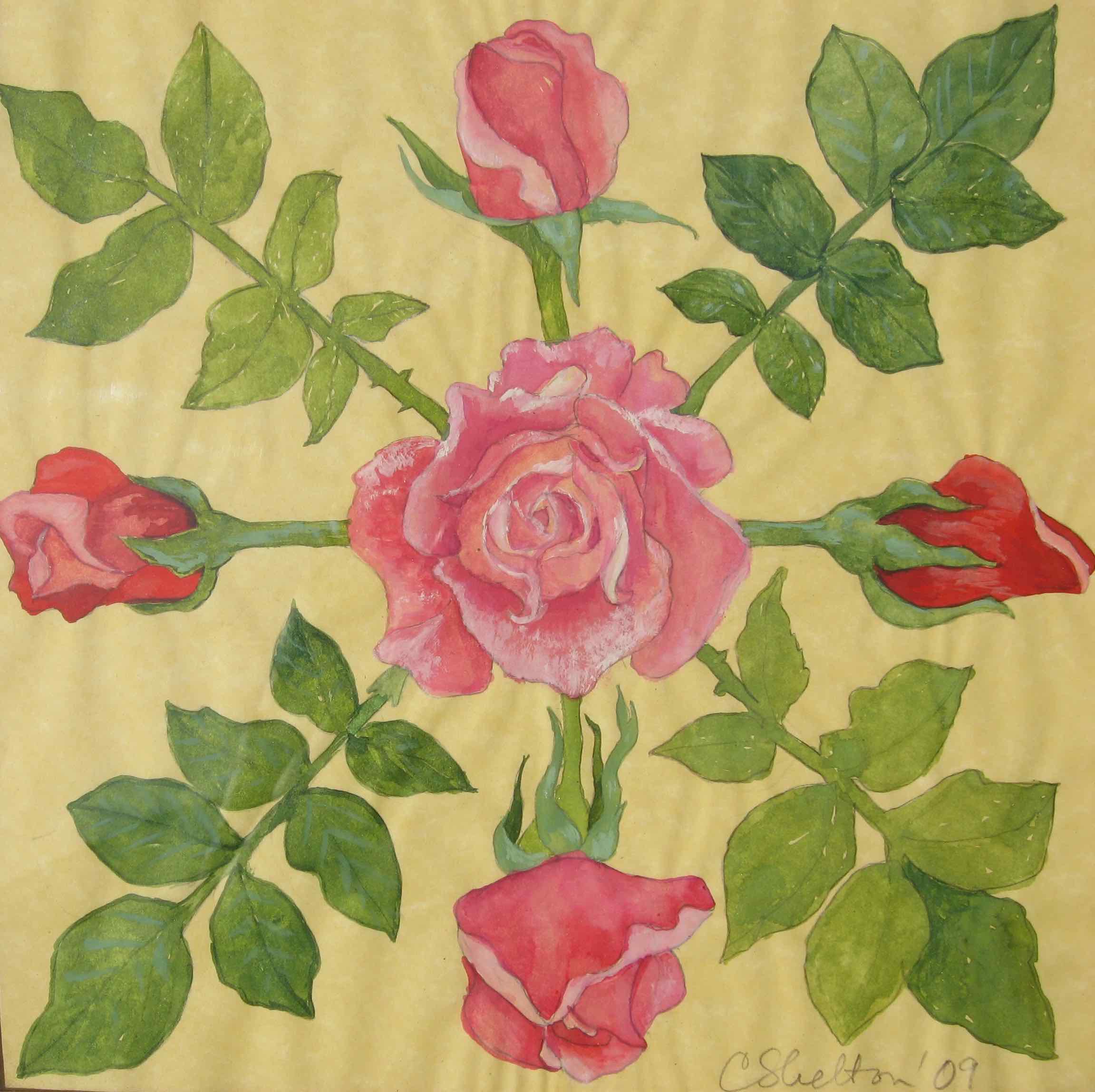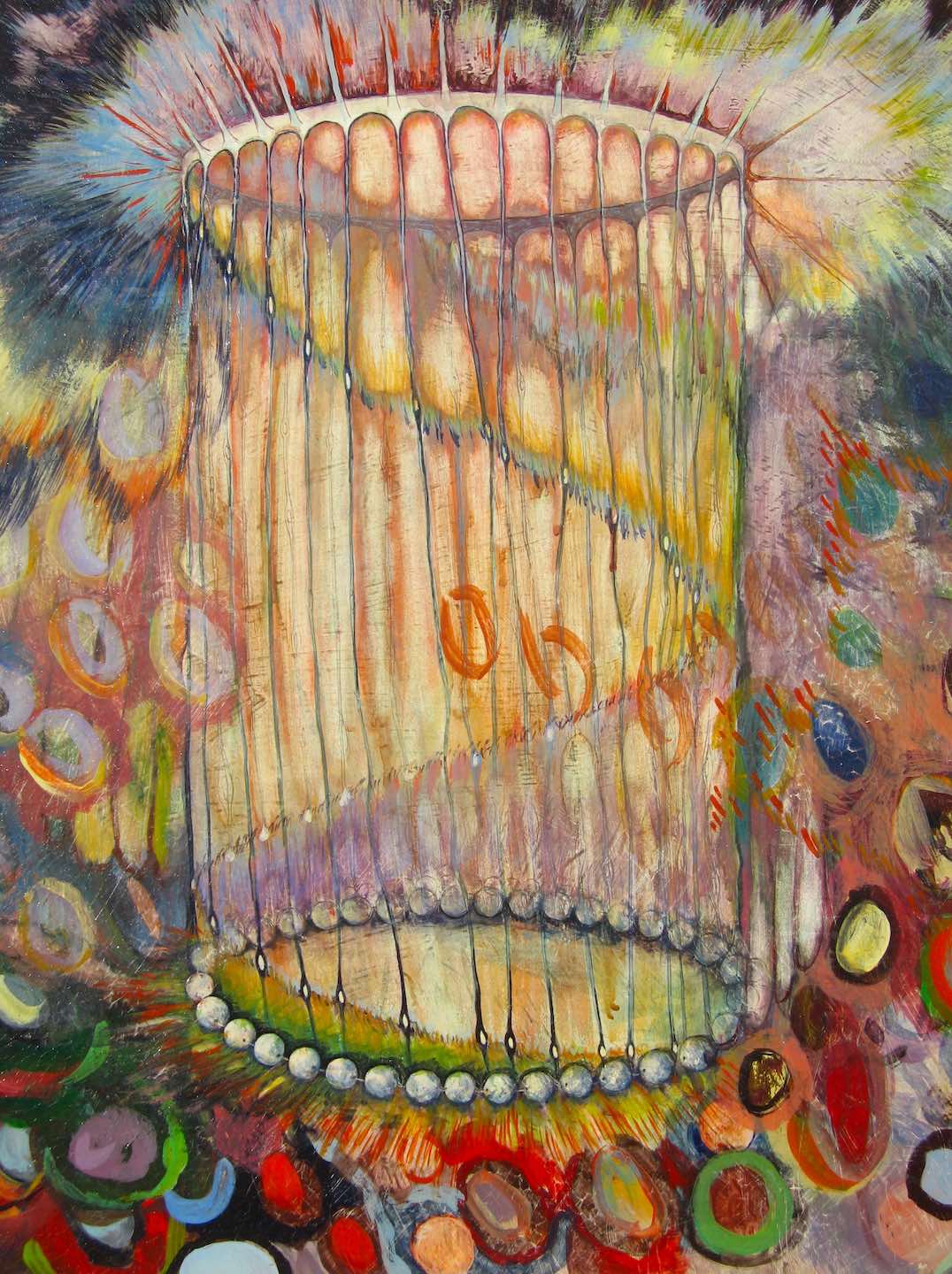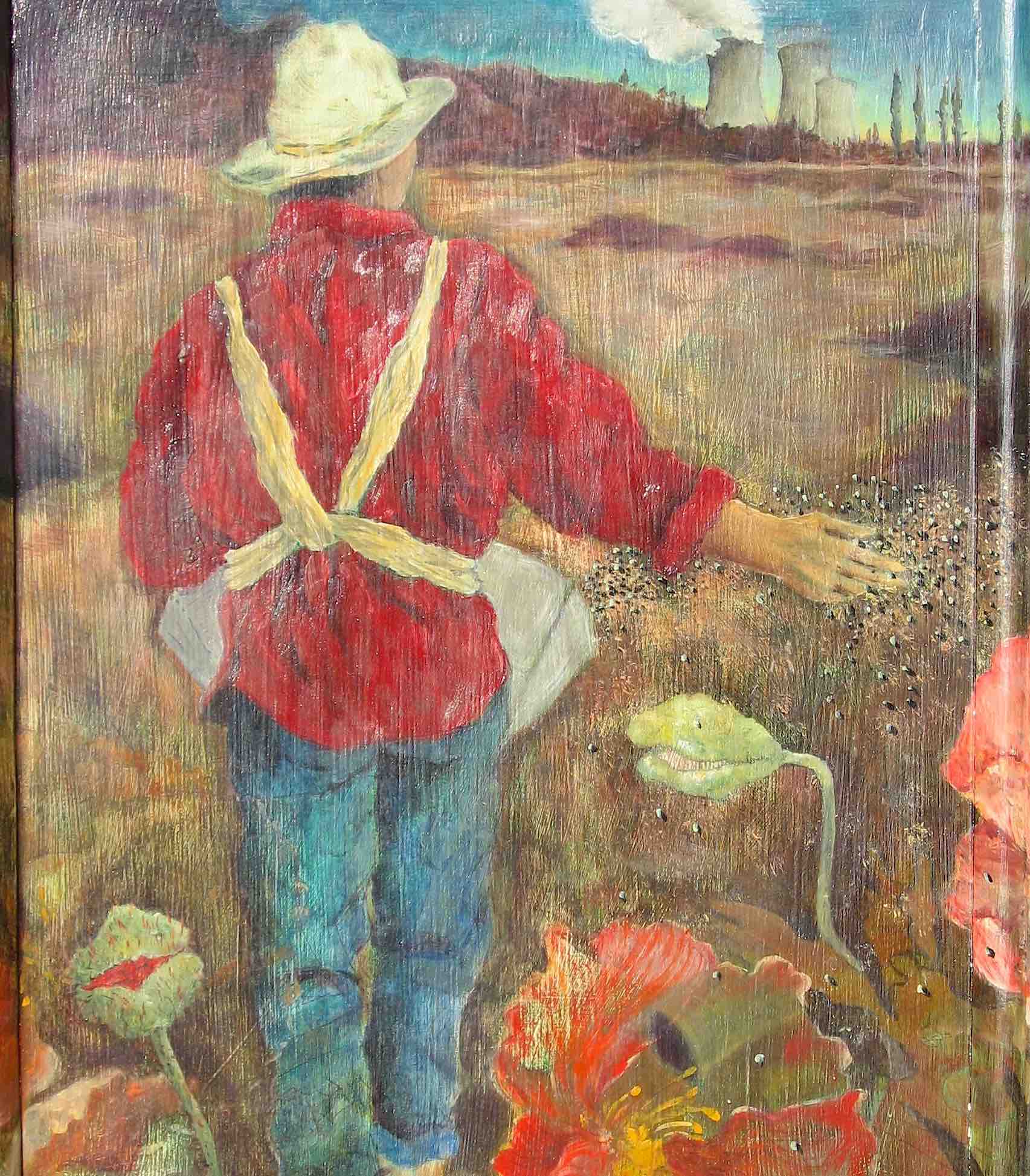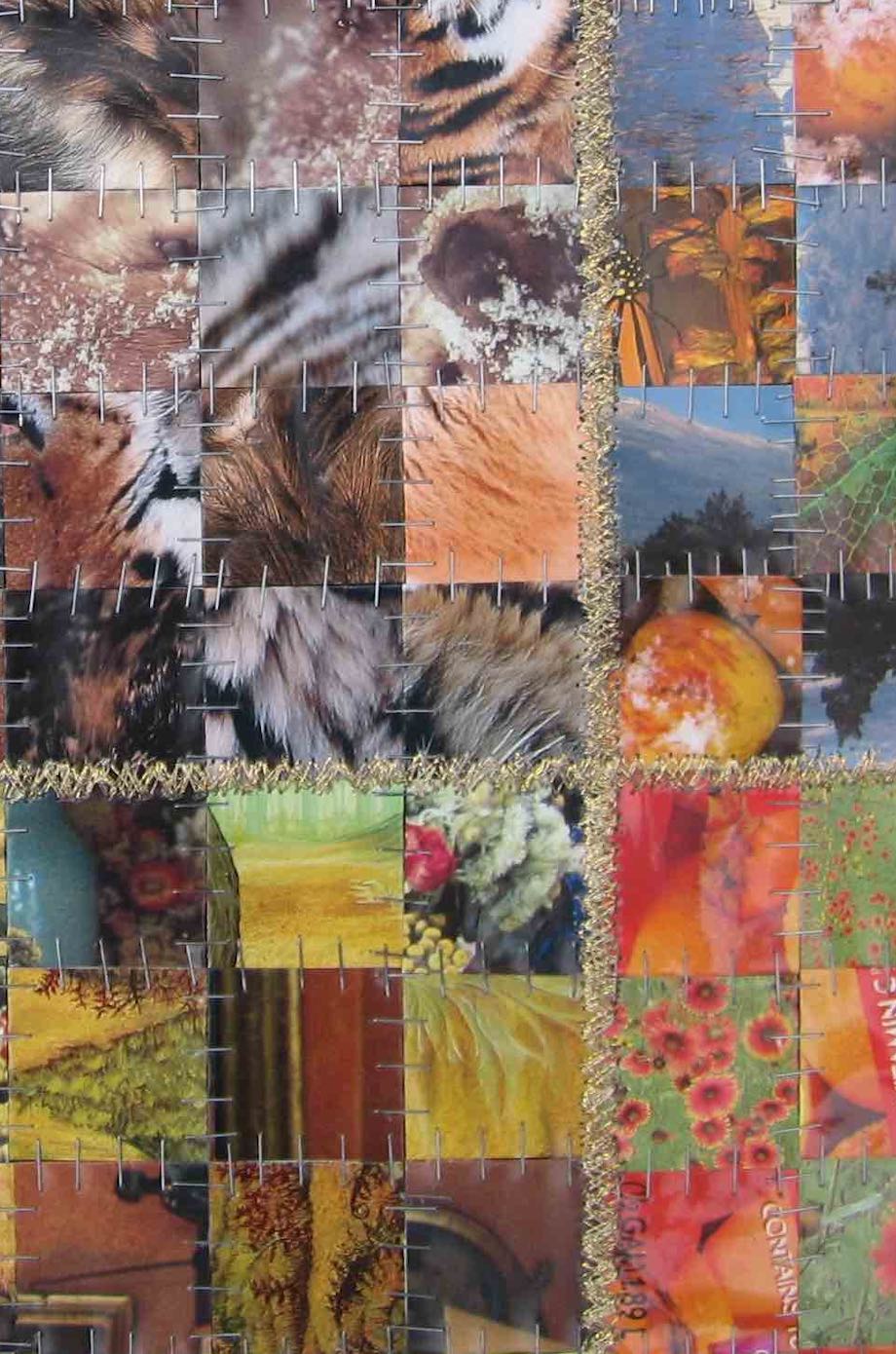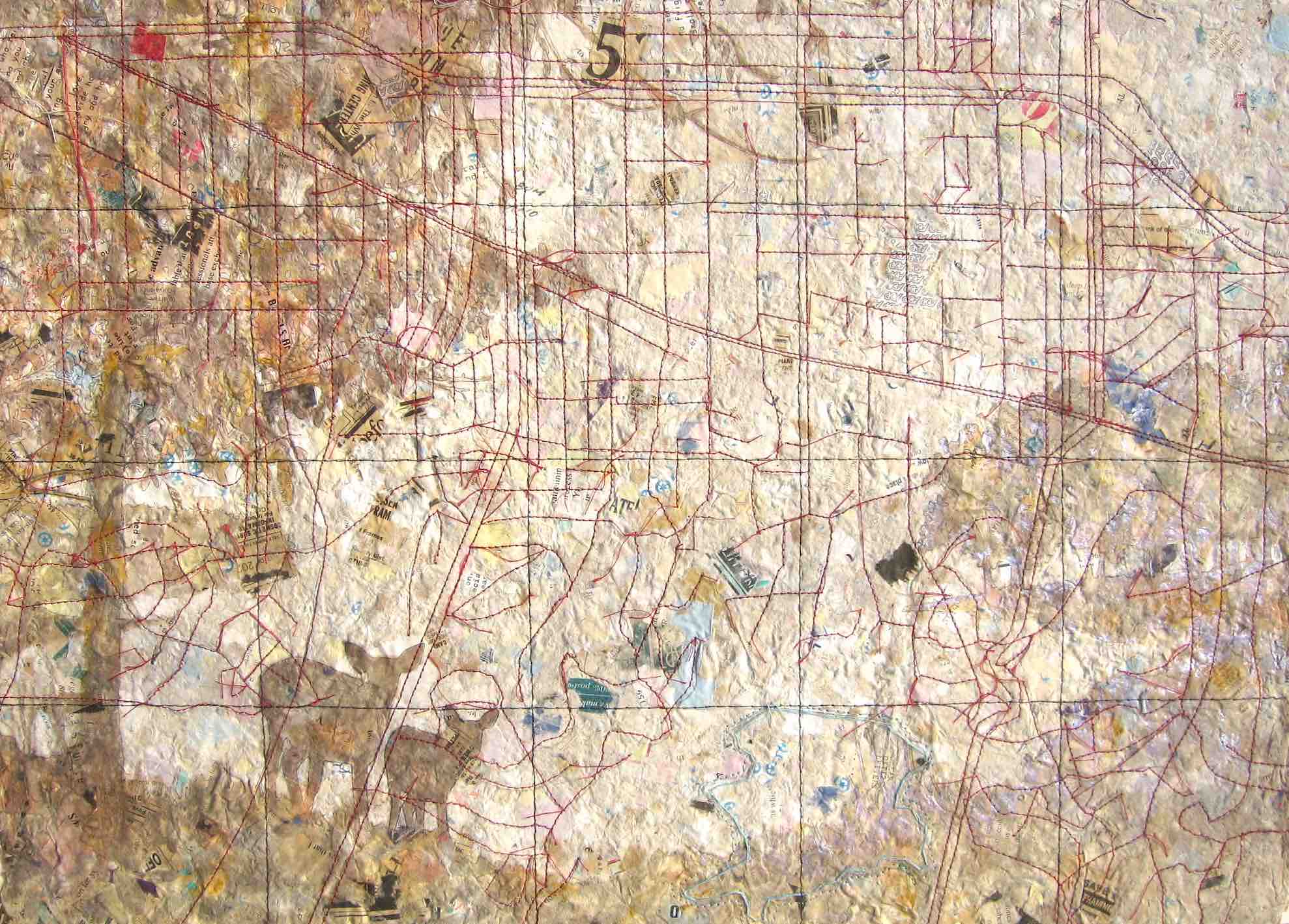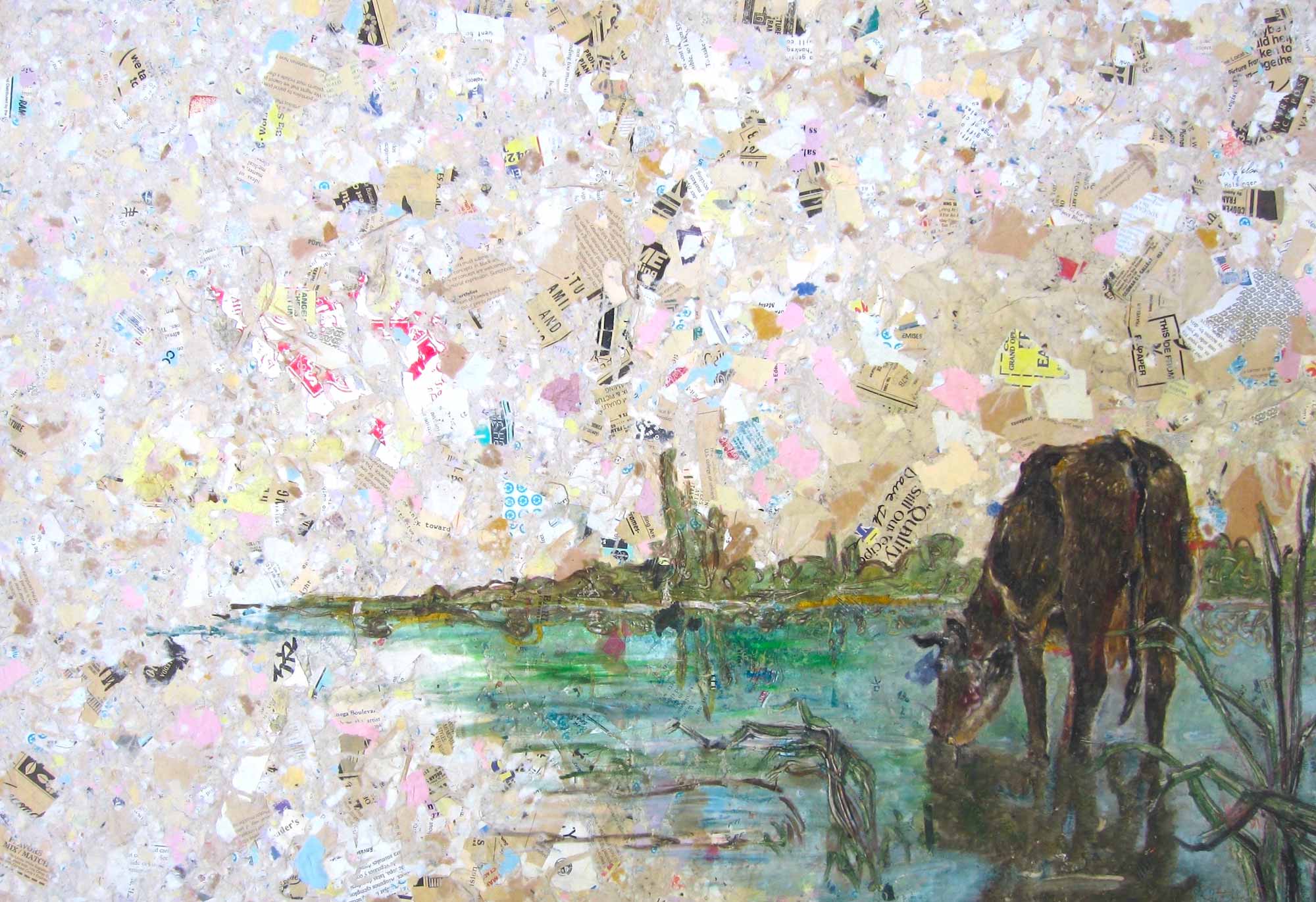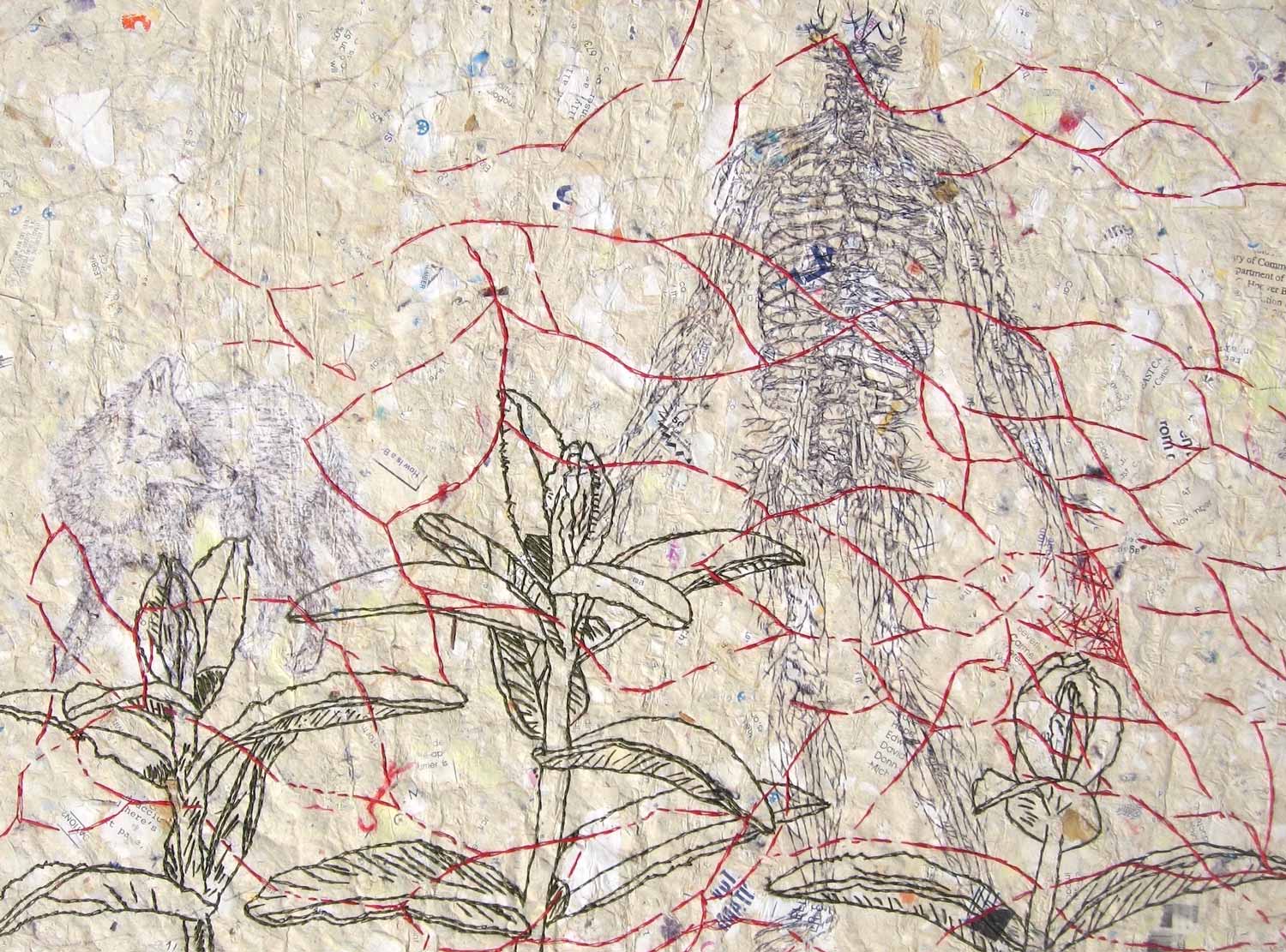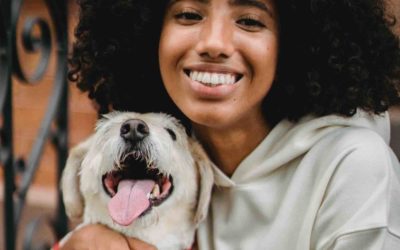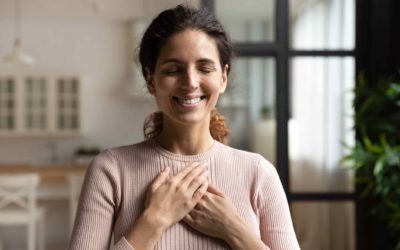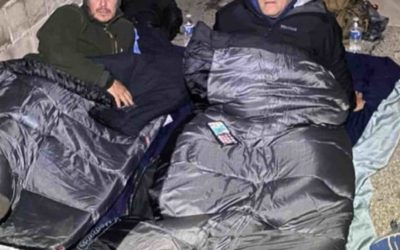Jean met Christy Shelton at church and was incredibly impressed with the artist’s newest work of art – a large, bare tree that stretched over the entire pulpit and church’s stage. As the weeks went on, Christy added leaves of different colors, so the attendees had a tribute to the seasons and the changes of life before them every week.
When we decided to highlight the North Hollywood Church of Religious Science, Jean knew she wanted to include Christy.
So, here’s Christy Shelton:
Christy Shelton
The Evolution of an Eco-Artist
What started you on this path?
I was introduced to “nature” when my family moved from Los Angeles to Eugene Oregon when I was five. My father was getting a second masters in Biology, and would take me with him to identify and collect plant specimens (to this day, drawing plants is still a favorite activity).
Being in the woods with my Dad felt special. To my mind this nature-place must be important if he is taking time out of his busy day to come here. I remember feeling awe-struck looking up at the sea of tall trees around me and becoming enchanted by the richly textured forest floor under my feet, the earthy smell of wet, layered leaves filling my nostrils, and noticing that the fallen logs covered in lichen were homes for birds and other small animals. It was a magical time and place.
Although it was only two years later that we returned to Los Angeles, California, this early childhood experience developed into a long term relationship with nature, which ultimately led to the realization that I am a part of nature, not separate from it. And to the path that I am on now, to live my values in every area of my life – personally, professionally and artistically, to the best of my ability.
Who gave you support early on?
Throughout my life I’ve made art. After high school my mother encouraged me to pursue an art education. I did my undergraduate work in painting and photography, followed by graduate work in art therapy and then an MFA in drawing and painting.
My early work incorporated nature based imagery, with a mystical twist. The Transformer is an example of that, which was a painted invention that transforms tears into seeds into pearls. Making the work felt like visual praying, and embodied my idealized hopes, such as those seen in The Sower, (an homage to, “The Sower” by the French painter, Millet). My version portrays a farmer sowing seeds as he walks across a bed of recycled items towards nuclear power plants in the distance with California Poppies coming up behind him; this painting was inspired by a poem by Wendell Berry (“In the dark of the moon, in the flying snow, in the dead of winter, war spreading, families dying, the world in danger, I walk the rocky hillside sowing clover”).
During my MFA, I was lucky enough to have a visiting professor from Hunter College one semester, Linda Day, who challenged me (that’s what guest artists are supposed to do) by asking, “Why make sentimental paintings of nature? Its like potpourri — dried nature with perfume added,” to which I answered, “because I love nature!” As harsh as that comment felt, it moved me to reflect on the nature of my “love.” If I loved nature so much, why was I cutting down more trees for my canvas stretcher bars, and using oil paints (a petroleum based product) for my self-expression? A year of research ensued into my personal ethos and alternate art materials – barn wood, paper bags, maps, gouache, watercolors, water based inks, recycled calendars, mail order catalogs, needles and thread. The Paper Quilts emerged at this time.
I also discovered a group of ecological artists whose art practice “seeks to preserve, remediate and/or revitalize life forms, and resources in the ecology of Earth,” who call themselves “Eco-Artists,” which is how I identify now as well. Inspired, I began a practice of taking ritualized walks in “nature” where I would pick up trash on the trail, bag it and list its contents. From there, I started creating work from trash, and ultimately, making paper.
What does your work aim to say?
Sustainability and connection are my intentions in both form and content. My work aims to “do no harm,” in the Buddhist sense, and to show that everything is connected in the web of life.
As the planet has become more populated, and wild spaces continue to be domesticated by humans, our connection with the wider community of nature has become a distant memory. By picking up trash on walks or hikes in nature, I am reconnecting my body to the natural world; by making paper from the trash I am transforming something unwanted into a substrate for my continued self-expression. I engaged with what was right in front of me, the nature I encountered in the city. Its formation is cohesive, useful, and potentially beautiful.
The paper trash is mixed with Kozo, a Japanese papermaking fiber that comes from the Kozo (Paper Mulberry) plant, which grows wild and is sustainably harvested in Japan and in certain parts of the US. The maps that I machine stitch onto the paper serve a dual purpose, formally as a grid, and informally, as a reference to man’s relationship to the land; the hand sewn plants or painted figures reveal what or whom also lives there.
My grandmother was a seamstress and taught me to sew. Making stitched drawings connects me to her and re-contextualizes the sewn line as mark making. And on some level, the stitches represent my wish to repair the environment.
What do you love about Los Angeles?
All the galleries and museums. Music and theater venues. The diversity. That the beach and mountains are less than an hour away.
Who or what inspires me?
As a Teaching Artist I get to share my love of art and the environment with children. My 3rd-6th grade students inspire me everyday. Recently, after a discussion about the problem of waste, and in particular, the problem with plastics, the 4th graders made self portraits using plastic bottles by re-thinking, re-shaping, and re-purposing them. They brought in recyclables from home, and as a class, we went to the park to do a trash pick up as part of the project. They said, “There are 24 of us, we can make a difference.” In addition, they wanted to do a school wide “zero-waste” challenge for a week because they understood how together, school wide, they could have an even bigger impact.
What do you consider success?
Integration, living and working so that my ends and means are in alignment. Every choice I make has a ripple effect. For example, if I choose to buy conventional produce I am inadvertently voting for pesticide use on the land. What am I actually doing to show my love, respect and appreciation for nature, for life? Living in harmony with nature must begin with me. The way I take care of my body, is the way I take care of the environment — detoxing where needed, to be a clear channel for the creative flow. If I say I “love” nature – then let me and my work do something loving for it while fulfilling my purpose as an artist.
What has been a real high point in your career or life?
My art was featured in the LA Times on Earth Day.
What is your motto or words to live by?
The Butterfly Effect and The Golden Rule. The idea that tiny changes in complex systems can cause huge effects, exemplifies that we are all connected, and that our actions matter to more than just ourselves, right now and throughout time.
Treating others as you would have them treat you is the basis for any civil society. Self, Society, and all of Earth inhabitants. In 1754 John Wollman offered the golden rule to protest slavery: “Jesus has laid down the best criterion by which mankind ought to judge of their own conduct. Whatsoever you would that men should do unto you, do you even so to them.” Essentially, “Love thy neighbor as thyself.”
What was the best piece of advice given to you?
Manage your insecurity so someone else doesn’t have to (or fill in any other neurosis after, “Manage your __________ …”).
What makes you laugh?
The unexpected that arises in the course of a conversation, typically with a girlfriend.
What’s next?
An Artist Residence at Sitka Center for Art and Ecology in Otis Oregon.
Pie, Cake or Ice Cream?
Pie. Pumpkin, Pecan, Berry, Apple, Cherry, Peach.
Interested in connecting with Christy?
Email her at:
christysheltonart@gmail.com
Interested in seeing more of insidewink’s Artists of Month?
Connect With Us on Social Media!
RECENT FAVES
Tips for Hitting the Road with Your Furry Friends
Part 1 of Kathlene McGovern’s 2 part series on the best and safest ways to travel with your furry friends!
I’m Just Curious
Dove Rose give us ideas on how to stay curious! Keep it Fresh in the Kitchen, on the Drive and in your Life. New ideas to keep our mind alive!
Living Unhoused for a Week: Ken Craft Takes to the Streets
Ken Craft of Hope of the Valley lives unhoused on the streets of the San Fernando Valley for 100 hours and shares the challenges, insights and struggles he faced on this journey.

